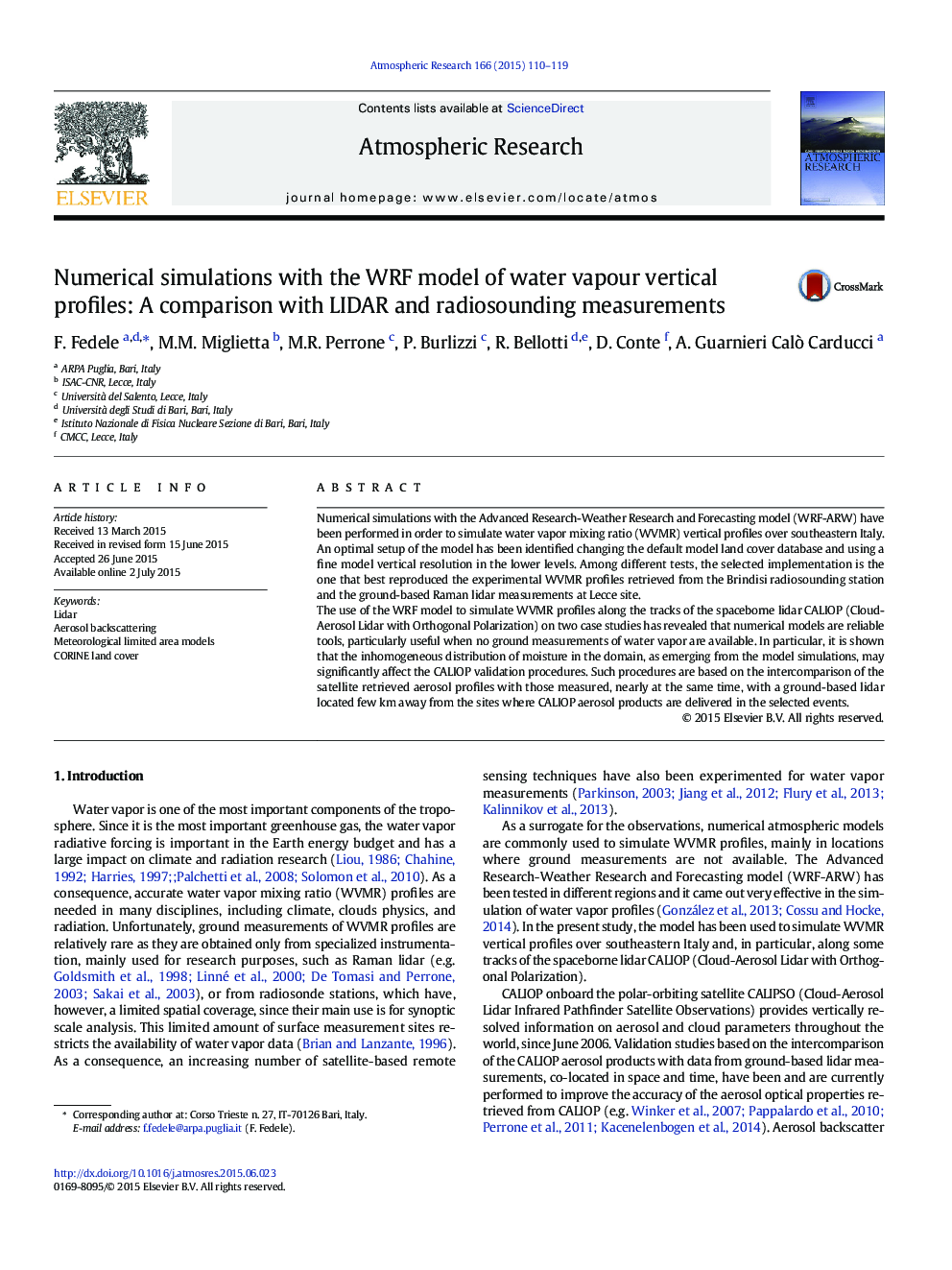| کد مقاله | کد نشریه | سال انتشار | مقاله انگلیسی | نسخه تمام متن |
|---|---|---|---|---|
| 4449732 | 1620510 | 2015 | 10 صفحه PDF | دانلود رایگان |

• How the WRF model performance may be improved by the use of the CORINE land cover and a finer vertical resolution.
• That numerical models could also be useful to calculate WVMR patterns over areas where measurements are not available.
• How strong moisture gradients can greatly complicate the validation of CALIOP backscatter coefficient profiles by direct comparison with the corresponding profiles retrieved few km away from ground-based lidar stations.
Numerical simulations with the Advanced Research-Weather Research and Forecasting model (WRF-ARW) have been performed in order to simulate water vapor mixing ratio (WVMR) vertical profiles over southeastern Italy. An optimal setup of the model has been identified changing the default model land cover database and using a fine model vertical resolution in the lower levels. Among different tests, the selected implementation is the one that best reproduced the experimental WVMR profiles retrieved from the Brindisi radiosounding station and the ground-based Raman lidar measurements at Lecce site.The use of the WRF model to simulate WVMR profiles along the tracks of the spaceborne lidar CALIOP (Cloud-Aerosol Lidar with Orthogonal Polarization) on two case studies has revealed that numerical models are reliable tools, particularly useful when no ground measurements of water vapor are available. In particular, it is shown that the inhomogeneous distribution of moisture in the domain, as emerging from the model simulations, may significantly affect the CALIOP validation procedures. Such procedures are based on the intercomparison of the satellite retrieved aerosol profiles with those measured, nearly at the same time, with a ground-based lidar located few km away from the sites where CALIOP aerosol products are delivered in the selected events.
Journal: Atmospheric Research - Volume 166, 1 December 2015, Pages 110–119